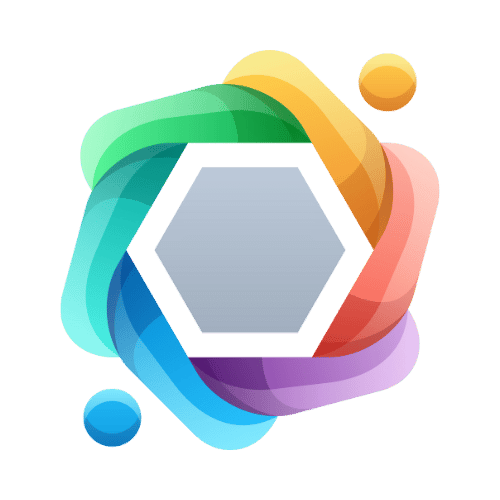Jumping into artificial intelligence might sound like a challenge, but you don’t have to be a math whiz or computer genius to get started. People from all walks of life are beginning to explore this fascinating field, discovering new ways to improve everyday life and open doors to exciting careers. If you’re wondering how to start learning AI for beginners, this guide is here to make things simple and clear. We’ll walk you through the basics, give you helpful tips, and point out resources that can support you on your journey.
Get Comfortable With the Basics
To start learning about artificial intelligence, it helps to understand what it actually means. In simple terms, AI is about teaching computers to do things that usually require human intelligence, like recognizing patterns, understanding speech, or making decisions. You’ll soon notice that AI shows up in many places—think virtual assistants, movie recommendations, or real-time translation apps.
Where AI Shows Up in Daily Life
- Voice assistants on smartphones
- Personalized shopping recommendations
- Smart home devices adjusting temperatures or lights
- Apps that translate text or speech instantly
Getting familiar with these examples can make the whole idea of AI less intimidating.
Branches You’ll Hear About
As you dive deeper, you might hear terms like machine learning, which is how computers learn from data, or computer vision, which is about understanding images. You don’t need to master these right away—just knowing they exist is a great start.
Build Up Your Essential Knowledge
You don’t need to have a degree to make progress, but brushing up on a few subjects will really help. Here’s where to focus:
- Math Basics: You don’t have to dive too deep. Refresh your skills on things like simple algebra and basic statistics. These help you grasp how AI makes decisions.
- Programming Foundations: Learning a programming language like Python is a good move. It’s straightforward and widely used in tech, making it a beginner-friendly entry point.
- Understanding Data: Get used to working with data—how it’s organized, how to visualize information, and what makes data “good” or “bad” for learning.
Practice Real Programming Skills
The best way to truly “get” AI is by doing, not just reading. Start tinkering with simple programming exercises and progress from there.
Start With Python
Python is popular in tech because it’s easy to read and has tons of helpful tutorials online. Download a free code editor and write simple programs, like a calculator or a number guessing game. This will build your confidence and get you comfortable with the basics.
Explore Helpful Tools
Once you’re ready, try out beginner tools like NumPy (for numbers and math), Pandas (for working with data tables), and Scikit-learn (for creating simple models). These resources are friendly to newcomers and have lots of documentation to help you along the way.
Break Into Machine Learning
When people talk about AI, they’re often talking about machine learning—teaching computers using patterns in data. Here’s how to start learning this step-by-step:
- Check Out Guided Learning Paths: Many platforms offer step-by-step introductions. Khan Academy and Coursera are full of beginner-friendly content.
- Try Interactive Platforms: Tools like Google Teachable Machine let you build simple models without coding.
- Explore Projects You’re Interested In: Whether it’s recognizing handwriting or predicting the weather, choose projects that are fun for you.
Work On Small Projects
Learning really sticks when you use it. Pick something you care about—like sorting your photos or making a basic chatbot—and try to apply what you’ve learned. Don’t worry about making something perfect. Each project will teach you more than any textbook can.
- Start with a beginner dataset. Websites like Kaggle or Data.gov offer free sets to play with.
- Follow a project tutorial. You’ll find lots of step-by-step guides for everything from analyzing sports scores to tracking spending.
- Share your work. Mistakes are part of learning, and sharing successes (and failures!) often leads to new friendships.
Connect With Others and Keep Exploring
You’re not alone in wanting to learn AI. Find forums, attend online meetups, or join free study groups. Many people teaching themselves will be happy to answer questions and share resources. Being part of a community makes the journey more engaging and helps you overcome roadblocks faster.
- Follow your favorite AI experts or teachers online.
- Join beginner groups and chats for advice and motivation.
Before you move on, you might find helpful resources at Machine Learning Mastery, which offers clear guides and tutorials for beginners.
Conclusion: Your AI Learning Adventure Starts Now
If you’re curious about how to start learning AI for beginners, remember: you don’t need to know everything from the start. Focus on small, steady steps—like mastering Python basics, experimenting with simple data projects, and connecting with fellow learners. With patience and practice, you’ll soon find yourself understanding concepts that once seemed out of reach. Stay curious, keep practicing, and enjoy the adventure. Who knows where your new skills might take you?
Frequently Asked Questions (FAQs)
1. Do I need a university degree to get started?
Absolutely not. Plenty of people jump into AI or data science by using free online courses and hands-on projects.
2. How much math should I know?
Basic algebra and understanding of statistics are a solid starting point. You can pick up more advanced math skills as you go.
3. What’s the easiest coding language for learning AI?
Python is beginner-friendly and widely used for projects involving artificial intelligence and data analysis.
4. How quickly can someone go from beginner to building projects?
With regular practice, you could start working on small projects within a few months. Everyone learns at a different pace, so don’t rush!
5. Where can I find beginner resources and datasets?
Check out Kaggle, Google’s Dataset Search, or public datasets from universities. They offer simple, free resources for all experience levels.
You may also read:Affordable Digital Marketing for Startups That Works



